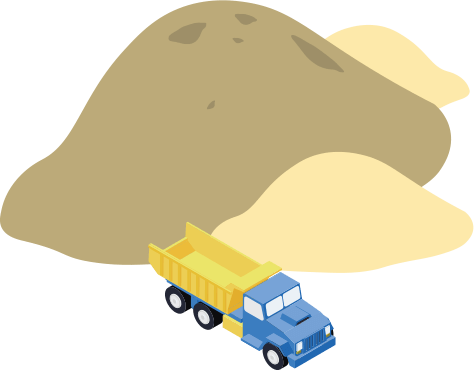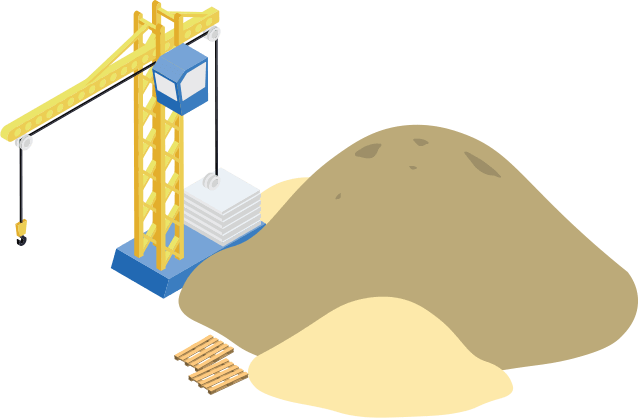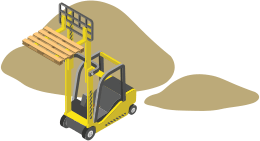Does anyone know what the statistics on online shopping look like right now? If you’re like me you’re currently spending a lot of time on Amazon and other shopping sites.
I know many of you are thinking about, or making moves to get an online store going.
Well, welcome to the new old thing – the online store.
E-commerce websites have been around for about 20 years. In fact we built our first online store for a client in 2005 or 2006. It sold Napoleon Dynamite merchandise and it was a grand success.
For years, store performance was very uneven. There have been other great successes, and many total failures. Online purchases as a percentage of total retail, however, remained low in most industries, until Amazon broke out, became a billion-dollar business.
Online sales just leaped into a whole other galaxy. Amazon alone has hired literally tens of thousands of extra employees to pack and deliver orders.
Do you think everyone is suddenly going back to shopping in stores once this is all over?
Me neither.
Sure, many, maybe most people will return to shopping in stores. But guaranteed, the volume of online store sales is going to remain at a MUCH higher level than it was prior to the advent of Covid-19. I expect it to only go up from there.
What do you do about it? For many businesses, it is a once-in-a-lifetime opportunity.
The online store industry has become what is called a mature market. Purchasing online is accepted by most people. HOW to do a successful online store is well known.
Unfortunately, most people doing online stores didn’t get the memo. If you’ve shopped online, you’ve had unhappy experiences, am I right?
It really isn’t that complicated. So let me tell you the most important things to know. The Big Things likely to make the difference between success and failure when you take the leap into the online store galaxy.
IF YOU BUILD IT, THEY WILL NOT COME
I mean, they will not automatically come. How many tens or hundreds of millions of websites are there, in the world, competing for attention?
Do you realize an online store is automatically in competition with every other website in their industry in the country, maybe in the world? Because online shopping can be from anywhere, to anywhere, Google is not going to give preference to a web store located near to a shopper.
Here’s the math, for those of you in Tampa Bay. The population of the metro area is about 3 million. There are over 300 million people in the U.S. Just by crude numbers, there is 100 times the market in the country as is in Tampa Bay, for whatever you are selling. That is the good news, and one of the big reasons why dreams of online store success are reasonable. Besides the ability to carry on business without risk of catching or giving your customers a deadly virus.
The bad news, there are also 100 times the competitors selling online. If you don’t have good search rankings or some other way to get people to your website, you aren’t going to get that proportionately larger amount of business. You aren’t going to get ANY. Because you are going to show up on page 92 on searches, and nobody goes there.
So if you are going to do an online store, don’t skip the FIRST step, which is work out realistically how you are going to get people to your website.
I’m not trying to discourage you, not at all. I want you to be a grand success. That means being reality-based on how to get visitors, because if no one visits your site, it doesn’t matter how great your website is or how good your prices are, or how wonderful your products are. No sales will occur.
I’m not going into great length here as to how to do that. But I will tell you there are three main ways:
- Organic search rankings.
- Paid advertising.
- Social media (online) and/or publicity (offline).
Depending on your industry, budget and other factors, one or more of these may be your key to success. We’ve had client stores succeed with each of these methods.
THIS ISN’T ROCKET SCIENCE
The right way to build an online store is no longer rocket science.
When we first started doing online stores, there were many questions no one knew the answers to. People did all sorts of things in different ways. One reason: it was all too new and consumer habits had not solidified.
Any new thing, on the internet or not, it takes a while for people to get used to things being a certain way, and to doing things in a certain way. I’ve written about the victory of top menus over side menus, that’s a perfect example. This is an interactive process between website builders and consumers. Any popular website will push things in a certain direction as people get to expect other websites to work the same way. Over time consumer preferences show in better performance of websites doing things a certain way. Knowledge of these spreads, and in time, nearly everyone does things that way, and people expect them to be done that way. Then if you do things differently, people get confused, even if it is “a better idea.”
It took quite a few years for online stores, and the big driver was the six-hundred-pound gorilla of Amazon. Half of U.S. online sales are made on the Amazon website.
Now, if you do things the same way Amazon does, you know people will find the experience familiar and reassuring. There are only two reasons for not completely imitating exactly the way Amazon does it. One is budget. The Amazon site is entirely custom coded and there are aspects of it you can’t easily duplicate “off the shelf.” So it could get very expensive.
The other reason is trust. Amazon is incredibly trusted. You just aren’t going to start out with that same level of trust, but that is the biggest factor on whether you get the sale – or an abandoned shopping cart. Amazon despite their trust level does a lot to reassure people. You need to do more.
There’s another important point. Even imitating Amazon to the extent you can, there will be questions and decisions to be made. Take something as simple as what happens when someone adds an item to your shopping cart. Do you take them to checkout or to continue shopping? There is no always right answer as this depends on what you are selling, to whom, and other factors.
In this, there is no substitute for testing and measuring and refining. See my article on this subject.
THE GOOD, THE CHEAP AND THE UGLY
So how do you get a store done? Unless you have the budget for a total custom coded store (spelled “big bucks”) there are two main choices: “Hosted” and “Self-Hosted.” An example of a hosted store platform is Shopify. Your webstore will be hosted on their servers and built using their proprietary software. This has advantages including being very inexpensive (a modest monthly fee) and a lot of built-in functionality that can be activated with the push of a button. The disadvantages include limited flexibility and being tied to that platform. You can’t move a Shopify site. But it is a good solution in many cases.
The alternative – what we do – is to build store websites on an independent platform such as WordPress. You can host a WordPress site anywhere, and you can literally do anything with a WordPress store. Some things can get complex to a point where custom coding is required, but even then, the custom code is typically for only a small part of the site. A WordPress store is going to be a lot more expensive than a Shopify, or Wix, or Squarespace store. It is going to be a LOT cheaper than a fully custom coded site. It is a good solution in many cases.
There are, by the way, many other platforms besides WordPress, including Drupal, Joomla and others. They all have one thing in common. They are WordPress wannabees, much less widely used and less capable. In our opinion, there is no reason to go elsewhere than WordPress if you’re in that middle ground between hosted stores and custom coded stores.
So there you go. Your instant intro to online store success. Good luck!









